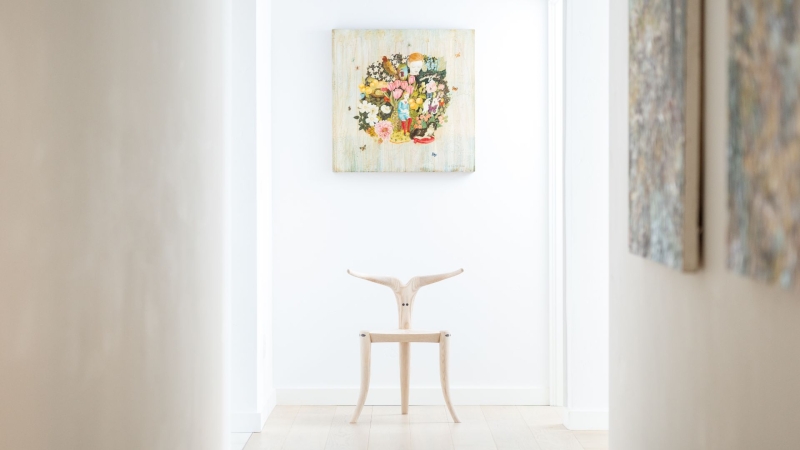Contents
- 1 The Ethiopian designer speaks the language of a continent’s ancient design – where memory, local craft, and modern sensibility converge to shape timeless objects infused with culture, imagination, and a clear vision of what’s to come.
- 2 Gallery
- 3 Being an African designer gives you a unique perspective, especially here in Europe, where designers from all over the world are celebrated but African design is often treated differently or seen as exotic – how do you navigate that, and how does your work balance your heritage with your personal approach to product design?
- 4 So even then, you knew that your work could incorporate your African history in a meaningful way.
- 5 Did that influence your sense of form and structure?
- 6 How did your education influence that?
- 7 And the heritage side – how does that feed into your work?
- 8 Can you give an example of how this manifests in your work today?
- 9 You mentioned influences from Europe, Asia, and Central America as well. How do these fit in?
- 10 You’ve spoken a lot about design and heritage. I’d like to understand your connection to objects. Why do you love objects so much?
- 11 Can you give a concrete example of that?
- 12 How does that contrast with Western design?
- 13 Speaking of narrative and meaning, one of the traditional objects that influences your work is the Afro comb.
- 14 So objects can carry political, cultural, and personal meaning simultaneously.
- 15 Let’s talk about your projects. Which ones do you consider most significant in expressing your approach?
- 16 How do you integrate traditional objects into modern production?
- 17 How do you see your influence on future generations of designers?
- 18 One last question – do you feel more African or Ethiopian?
- 19 So your identity is both personal and pan-African?
- 20 And what keeps you motivated?
by Ludovica Proietti
The Ethiopian designer speaks the language of a continent’s ancient design – where memory, local craft, and modern sensibility converge to shape timeless objects infused with culture, imagination, and a clear vision of what’s to come.
Modern, tactile, and unapologetically rooted in African heritage: Jomo Tariku’s designs strike a rare balance between culture and craft. Each piece feels familiar yet entirely new – functional enough for daily life, expressive enough to tell a story. Drawing from the objects and art his family collected across Africa, Jomo translates memory, history, and natural forms into modern African design that resonates across continents. His work doesn’t just occupy space: it commands it, inviting connection, curiosity, and a deeper appreciation for the continent’s creativity.
I met Jomo in Tanzania, and in our following conversation, he reflects on what it means to be an African designer today: the influence of his Ethiopian upbringing, the rigor of industrial design, and the ways in which everyday objects – ritual, function, and heritage – inform his work.
Gallery
Open full width

© Jomo Tariku

Ashanti Natural Wood Stool © Jomo Tariku
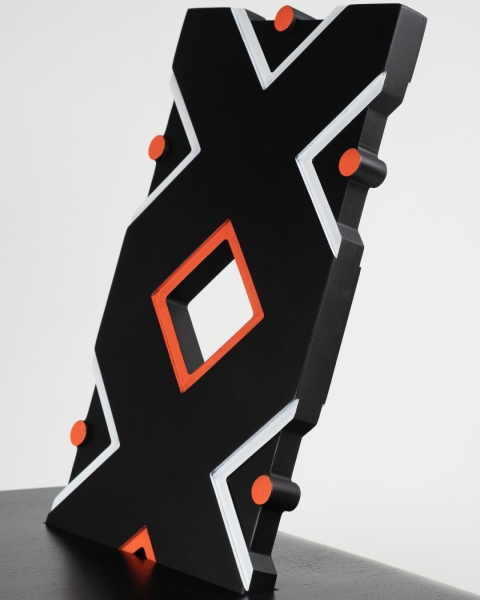
Detail of the back of the Qwanta Cantilevered Chair © Jomo Tariku
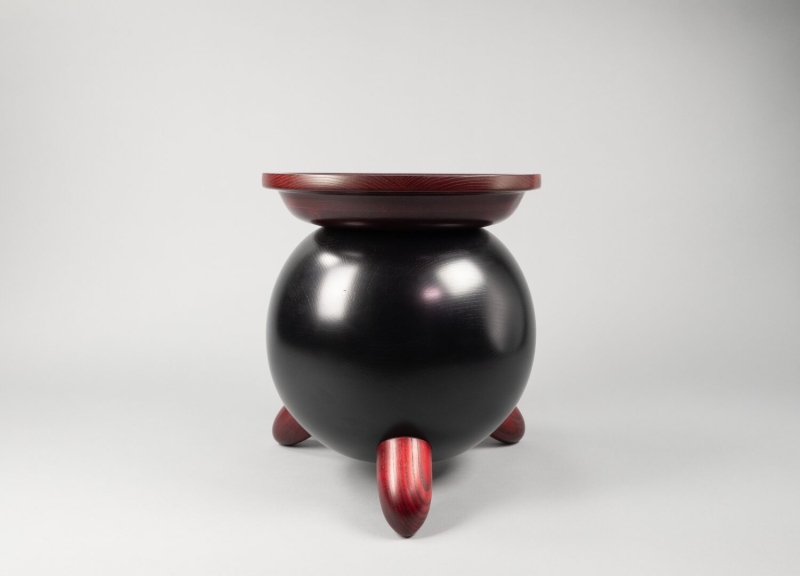
Enssera stool by Jomo Tariku © Jomo Tariku
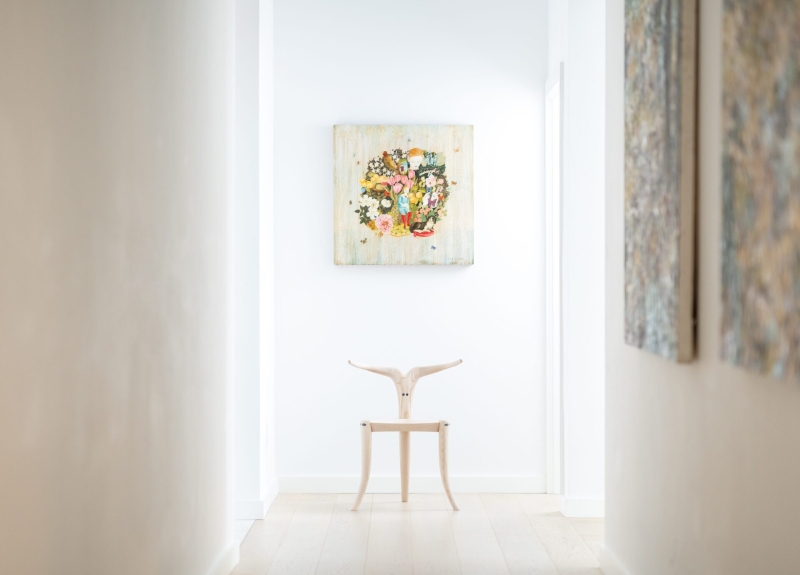
Fernweh (2024), by Jomo Tariku © Benjamin Edwards, Wall Art_ Anne Siems
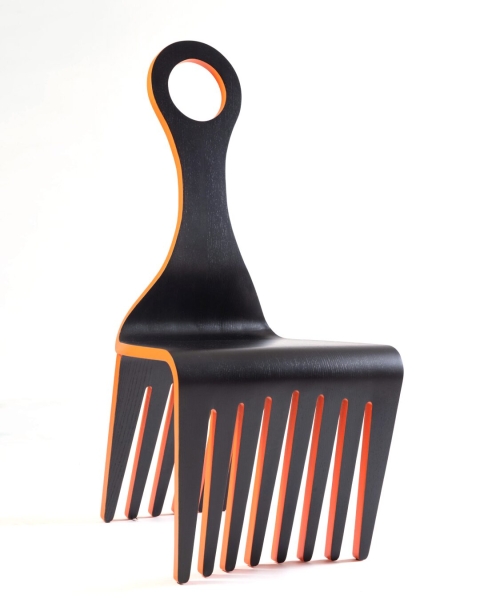
Meedo Chair, in Black by Jomo Tariky © Wexler Gallery
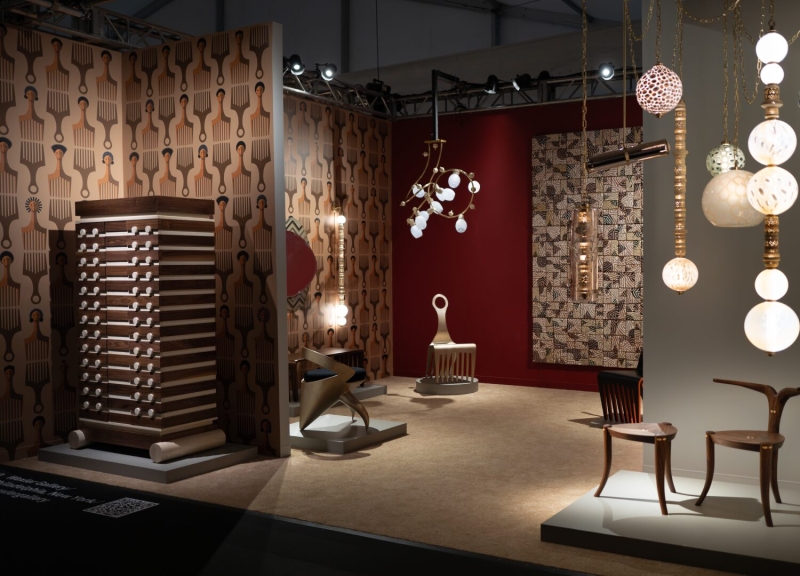
From Miami Design Week 2023, Wexler Booth © Indrias Kassaye
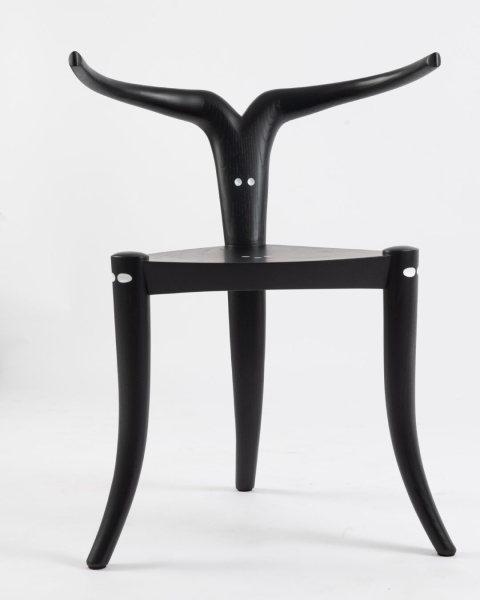
Nyala Black by Jomo Tariky © Wexler Gallery

From the exposition Juxtapose (2024) by Jomo Tariku © Wexler Gallery
Open full width
From his expositions, like the Afrofuturist Period Room, to the subtle reinterpretation of traditional forms, in chairs, stools and products, he unpacks how culture, craft, and modernity converge in his designs, offering a rare insight into one of the minds behind contemporary African design.
Jomo Tariku:
“What helped me was studying industrial design. It gave me a framework for thinking about functionality, ergonomics, material choices, and production – everything that makes an object work in the real world. The balance comes from merging that technical, industrial mindset with the richness of heritage, creating objects that are both modern and deeply rooted in African identity. During my industrial design thesis at the University of Kansas, in the US, I focused on African designs. The goal was to create a modern African design line that I could call my own. I wanted to build something that could be attributed directly to me. That was the intellectual structure guiding me even back in 1992.”
So even then, you knew that your work could incorporate your African history in a meaningful way.
Jomo Tariku:
“Yes. One reason I pursued this is that, growing up in Ethiopia, our architecture and libraries were full of incredible collections, mostly American or European. During breaks, I would wander through these collections. I had never seen anything like them when I was young. My father, although not a designer, worked in civil service and was very interested in structure. Our home had pieces from different parts of the world, and he took great pride in them.”
Did that influence your sense of form and structure?
Jomo Tariku:
“Absolutely. As a child, I would interact with these objects during the long summer breaks. My father would warn me not to damage anything, but I was encouraged to explore them. My brother and I even did apprenticeships in a small woodworking station in our neighborhood. There were only three or four machines, but it gave me hands-on experience. My father collected all these design pieces during his travels across Africa, and our home became a kind of repository. From an early age, I was surrounded by objects that shaped my creative thinking. Later, studying industrial design allowed me to combine that heritage with a scientific approach – understanding ergonomics, psychology, functionality. That became the perfect marriage: traditional inspiration with modern, analytical design methods.”
How did your education influence that?
Jomo Tariku:
“Studying industrial design introduced me to a scientific approach to design. I learned about ergonomics, functionality, material efficiency, and production processes. I could marry that technical rigor with the aesthetic and cultural language of African heritage. For example, I was fascinated by Ashanti stools, the traditional three-legged stools in Ethiopia are often carved from a single piece of wood. Beautiful, but from a production perspective, it’s not efficient in today’s manufacturing environment. I had to rethink how to honor the form and function while creating joints and methods that allow modern production. That’s the balance: maintaining inspiration while applying contemporary industrial design principles.”
And the heritage side – how does that feed into your work?
Jomo Tariku:
“My heritage is the launchpad. It provides endless inspiration. Objects, forms, patterns, stories – these are not just decorative; they carry cultural meaning and functionality. African designers have historically been underrepresented in design canons. Often, when African work appears in books or collections, it’s exoticized, folkloric, or treated as peripheral. My goal was to assert that African design has its own language, one that can influence contemporary design globally. We are custodians of our culture, but also innovators – we can create objects that impact the present and future.”
Can you give an example of how this manifests in your work today?
Jomo Tariku:
“Take the Nyala chair, for example. Its clean, Scandinavian-influenced lines are grounded in industrial principles, but the inspiration comes from African heritage. The design reflects both aesthetics and functionality. In Ethiopia, stools are carved from a single piece of wood, but we can’t produce that efficiently at scale. I had to innovate – creating joints and using materials in a modern way while respecting the form. I see this as a contribution to my generation. It’s about evolving tradition, translating cultural heritage into contemporary design language, and maintaining functionality without losing artistic value.”
You mentioned influences from Europe, Asia, and Central America as well. How do these fit in?
Jomo Tariku:
“Design is a universal language. When I interact with designers from different countries, I see how perspectives intersect. I incorporate these influences alongside African heritage. My work becomes a dialogue between cultures: lines and forms that are clean and contemporary, but with a narrative rooted in Africa. My design language is neither purely African nor purely Western; it’s an amalgamation. African heritage gives the soul, industrial design gives the structure, and international influences give perspective. This fusion is central to my philosophy.”
You’ve spoken a lot about design and heritage. I’d like to understand your connection to objects. Why do you love objects so much?
Jomo Tariku:
“Growing up in Ethiopia, industrial design wasn’t even recognized as a profession. I was surrounded by objects – masks, spoons, furniture – that fascinated me. My father, although not trained in design, appreciated well-crafted objects. Our kitchen table, for example, was Scandinavian; it had character, structure, and craftsmanship that spoke to me. I drew these objects as a child, not as an academic exercise, but because they intrigued me. Objects carry history, personality, and emotion. They’re what remains over time, what survives as a record of culture. I’ve always been fascinated by how objects can embody human experience, not just utility.”
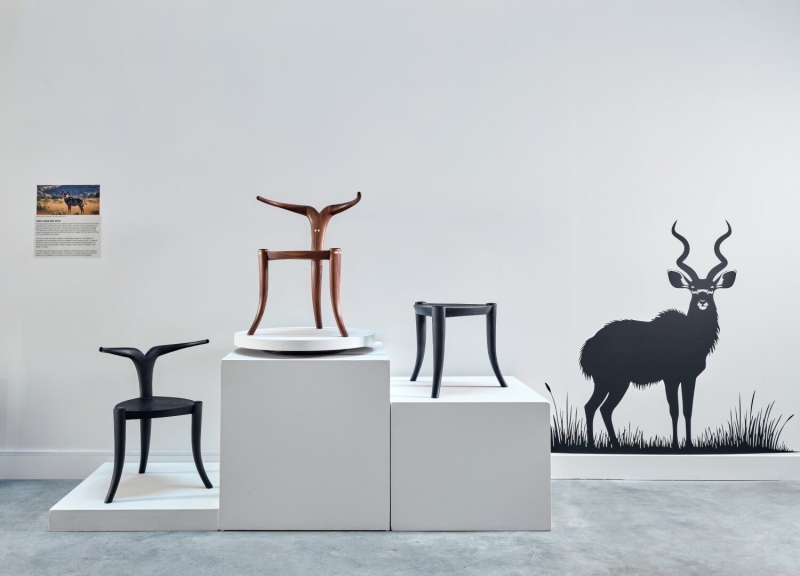
From the exposition Juxtapose (2024) by Jomo Tariku © Wexler Gallery
Can you give a concrete example of that?
Jomo Tariku:
“Take the traditional Ethiopian coffee ceremony. The tools we use – the bowl, the tray, the utensils – are functional, aesthetic, and symbolic. The coffee is prepared, served, cleaned, and returned to its place. These objects are not just art; they are embedded in daily ritual. They have a lifecycle: they are used, sometimes they break, yet they retain value. That duality fascinates me: beauty and functionality, art and life intertwined. Many African objects have multiple layers of meaning. Small statues, masks, and utensils are practical, ceremonial, and aesthetic all at once. Unlike the European modernist tradition, which often separates function from emotion, African objects carry “heart.” They are part of the family, part of the home, part of everyday life.”
How does that contrast with Western design?
Jomo Tariku:
“Modern Western design, influenced by the industrial revolution, often prioritizes pure function or form. Objects are rational, stripped of emotion. Not that European design isn’t beautiful, but it’s different. In African culture, objects have a life beyond their utility – they connect to memory, identity, and ritual. And even if I’ve been influenced by design from all over the world, I always return to Africa for the soul of the design. My work is a synthesis: global techniques and perspectives, grounded in African narrative and meaning.”
Speaking of narrative and meaning, one of the traditional objects that influences your work is the Afro comb.
Jomo Tariku:
“The Afro comb is a very powerful example. It’s not only a functional object but a symbol of Black identity and pride. During the civil rights era, when African features were often denigrated, the Afro comb encapsulated resistance, style, and cultural assertion. The Afro comb, for instance, became a symbol of black pride during the civil rights era. My work, the Meedo Chair, seeks to capture that layered meaning – historical, cultural, functional – without resorting to pastiche. Each object, each room, is an interpretation that resonates with the past and addresses contemporary identity.”
So objects can carry political, cultural, and personal meaning simultaneously.
Jomo Tariku:
“Every object tells multiple stories. When I design, I think about that layered meaning. I want objects to resonate on different levels: functionally, aesthetically, culturally. Creating a modern piece from traditional inspiration involves research, mental exercise, and interpretation. I don’t just mimic folklore; I translate it into a form that has my own voice while retaining the essence of its origin. Every object in a household, every utensil, every piece of furniture, has layers of significance. Understanding and respecting that is crucial in African design. It’s not just decoration – it’s part of life, ritual, and identity.”
Let’s talk about your projects. Which ones do you consider most significant in expressing your approach?
Jomo Tariku:
“Every project is a dialogue between inspiration, research, and execution. The Nyala chair is one that stands out – it embodies my fusion of African heritage and industrial design. Its clean lines reflect Scandinavian influence, but the form draws directly from African stools. Another example is the Afrofuturist Period Room. The project involved recreating objects from a historical black neighborhood near the Met, blending authenticity with contemporary interpretation. Each piece had to be studied in detail – construction, scale, function, symbolism. The process was both painstaking and deeply rewarding.”
Jomo’s deep respect for his continent and its imagination fuels his entire practice. This sense of meaning was powerfully captured in his solo exhibition Juxtapositions in Philadelphia last year, where traditional elements of African design were placed in dialogue with his own creations – a tribute to his land, its craft, and the knowledge passed down through centuries.
How do you integrate traditional objects into modern production?
Jomo Tariku:
“Traditional African objects, like the three-legged stools or ceremonial items, often cannot be reproduced exactly with contemporary manufacturing techniques. I have to reinterpret construction methods, create joints, adjust scale, and use materials efficiently. The goal is not to replicate but to evolve – to honor tradition while making it functional and producible today. My creative process is half research, half experimentation. I analyze historical pieces, understand their structure, and then imagine how to translate them into modern design. I iterate constantly, revising proportions, ergonomics, and construction until the form feels right.”
How do you see your influence on future generations of designers?
Jomo Tariku:
“I see myself as a bridge. I create objects that respect tradition while exploring modern possibilities. This approach encourages younger African designers to assert their design language, to innovate without abandoning heritage. Our culture is rich with ideas; it’s time those ideas shape the global design narrative.”
One last question – do you feel more African or Ethiopian?
Jomo Tariku:
“African, first and foremost. I was born in Kenya, and even my name reflects that – it’s Kenyan, not Ethiopian. My parents are Ethiopian, and I draw inspiration from Ethiopian culture because it’s what I grew up with, what I know intimately. But my goal, from my very first thesis onward, has been to extract concepts and ideas from across Africa. That could be natural forms, architecture, or traditional artifacts.”
So your identity is both personal and pan-African?
Jomo Tariku:
“Exactly. I focus on the Ethiopian side because of familiarity, but the larger African context informs everything I do. When I create, I want to synthesize ideas from across the continent, blending them with contemporary design principles. This approach allows me to maintain authenticity while innovating. The constant is respect for heritage, combined with a curiosity about the world.”
And what keeps you motivated?
Jomo Tariku:
“Curiosity and challenge. Every project is a puzzle – how do I transform a traditional object into something modern, functional, and meaningful? That process of research, experimentation, and reflection is what drives me. The moment I feel a piece is complete is deeply satisfying, but the next challenge is always around the corner. Design is about exploration, problem-solving, and storytelling. The objects we create are vessels of culture, memory, and identity. They connect us to our past, shape our present, and influence the future. That is what excites me every day.”
